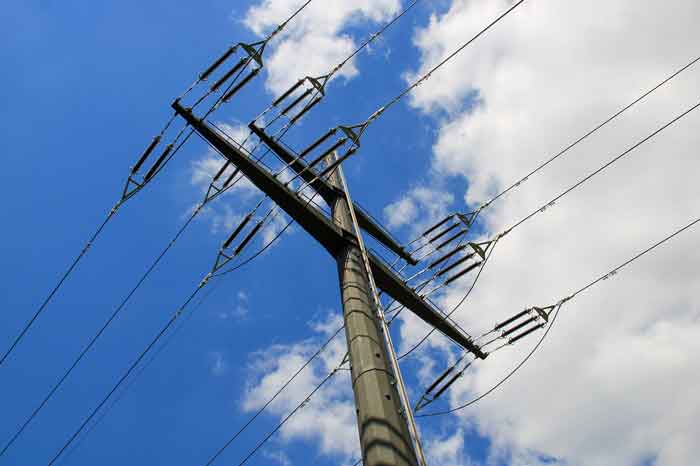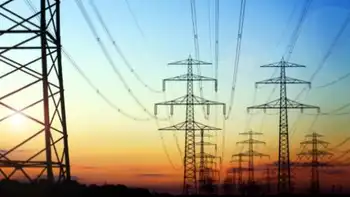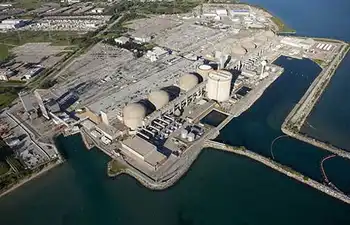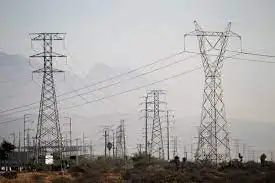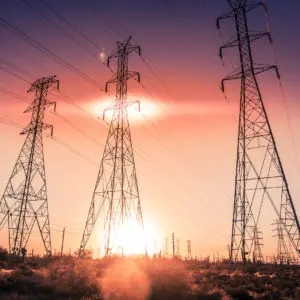Wind power blowing money away
By Caijing.com
Protective Relay Training - Basic
Our customized live online or in‑person group training can be delivered to your staff at your location.

- Live Online
- 12 hours Instructor-led
- Group Training Available
"When that much wind is moving through, the generators can't make electricity," explained Ma Zhanxiang, vice president of the Inner Mongolia Electric Power Industry Association (EPIA). "Money just blows by."
The turbines were forced to shut down not because the Mongolian wind was too strong, or for mechanical reasons, but because the system for distributing power from Xilin Gol and other wind farms built in recent years in northern China is simply too weak.
When cold weather arrives, wind farms have to compete for transmission space on a power distribution grid buzzing with electricity generated by the region's coal-fired thermal heating plants, which fire up in winter to supply heating for local residents as well as electricity.
According to EPIA, Inner Mongolia's installed wind power capacity approaches 3.5 gigawatts, and currently nearly one-third of that is sitting idle. The remaining two-thirds capacity is supplied by turbines that run erratically, shutting off and on according to demand.
"Wind power is too concentrated" in certain regions of China including Inner Mongolia, Ma said. "When there is wind, wind power plants need to generate electricity. But power grids get overwhelmed."
And that wastes money. Nationwide, some 5 million gigawatts of wind power generating capacity never made it to the grid during the first half of 2009. Since wind farm construction costs some 10,000 yuan per kilowatt, the total idle investment is worth about 50 billion yuan.
"The winter wind blows hard, but things aren't easy for wind power," Ma told Caijing.
Outside Inner Mongolia, wind power capacity is unevenly spread across sections of Gansu Province in the northwest, Heilongjiang and Jilin provinces in the northeast, and coastal areas such as Jiangsu Province.
With the exception of Jiangsu wind farms, most of the nation's wind energy operators concentrate power generation at a grid terminus or in areas with high concentrations of thermal plant capacity. And factors such as local market demand, power grid links, wind farm expansions and capacity peaks contribute to the fact that equivalent full load hours (EFLH) are relatively rare for wind farms. An EFLH is equal to an annual power load divided by installed capacity.
Various experts have started weighing in with suggestions for reducing overcapacity and streamlining wind energy in China, which is government subsidized. For example, State Council researchers recently called for a "systematic" approach to promoting healthy development of the industry.
"Overcapacity in areas of high wind power concentration cannot be ignored," a China Electricity Council (CEC) expert told Caijing.
Production restrictions at wind farms have become all too common. In the first half of the year, for example, nearly 150 million kilowatt hours of generated power went unused in the Guazhou and Yumen areas of Gansu because the grid could not absorb the power they produced. This represented 27 percent of Guazhou's and 33 percent Yumen's actual wind power production.
To better understand problems with power capacity loss and grid restrictions, a joint study was launched in June by the Society of Electrical Engineering's Wind Power Committee and Tidal Power Committee. Investigators found power restrictions affecting 48 wind farms operated by the country's seven largest wind power developers, which supply 50 percent of the nation's wind power.
Installed capacity at affected wind farms totaled 4.4 million kw at the end of 2008, or more than 70 percent of the 6 million kw installed capacity at all plants operated by the seven companies. Grid restrictions cost 370 million kwh in lost power in 2008, which is an amount equal to 103 EFLHs.
Since these seven largest wind power developers supply 50 percent of the nation's wind-generated electricity, grid restrictions could mean wind power losses in 2008 were as high as 740 million kwh nationwide, or close to 6 percent of the national wind power generating capacity of 12.8 billion kw. In the first five months of 2009, losses were about 620 million kwh – an EFLH of 140 hours, or more than 200 hours on an annual basis. As a result, electricity use restrictions through 2009 were expected to be even more pronounced, and could result in losses of more than 2 billion kwh for the full year.
National Development and Reform Commission (NDRC) data illustrates the seriousness of idle wind power capacity. From January to September 2009, NDRC said, wind farms with generating capacity of at least 6 megawatts produced 18.2 billion kwh of electricity nationwide – up 117 percent over the same period 2008. But that was only about 0.45 percent of all the electricity churned out by China's major power plants, and was significantly less than wind power's proportion of total installed capacity, which is 1.15 percent.
Why is China suffering from imbalanced wind power capacity? Some point a finger at the state-owned enterprises (SOEs) that build and operate wind farms.
"Most wind power projects are owned by SOEs, while wind power equipment makers are mostly private and foreign-funded enterprises," a CEC expert told Caijing. "This is an interesting phenomenon, and to a certain extent reflects the problems of wind power."
CEC research said nearly all of China's wind power producers are state-owned. In the seven provinces with major wind power development projects, central SOEs comprise 73 percent of the 92 wind power companies and control 81 percent of total installed capacity.
China began large-scale wind farm construction in 2005, and this year NDRC began arranging bids for wind power concessions. So far, bids have been completed for 15 projects, with each slated to provide more than 10 gigawatts.
Wind power is considered a crucial path for power industry SOEs seeking to expand installed capacity. And it's a path encouraged by the government. For example, a worker at state-owned China Power Investment Corp. (CPI) told Caijing the government plans to more strictly control additional, large-scale thermal energy projects over the next two years. And the government has refused to approve any new major hydropower projects for the past two years.
"State-owned power generation companies are now striving to expand installed capacity through wind power," the CPI worker said.
Moreover, wind power is the biggest recipient of 4.5 billion yuan in renewable energy subsidies that the government finances by adding an extra 0.002 yuan charge to each kilowatt of electricity sold nationwide.
The National Energy Board announced plans early this year to raise the wind power generation goal to 20 million kw next year and 100 million kw by 2020. The board also ordered the construction of wind power bases exceeding 10 megawatts in Gansu, Inner Mongolia, Jiangsu and Hebei Provinces within 10 years in accord with a government policy calls "build large bases, integrate with the grid."
Meanwhile, turbine manufacturers are seizing opportunities by bumping up production capacity. According to statistics from Li Junfeng, deputy director of NDRC's Energy Office, China today has more than 70 wind power equipment manufacturers, up from six in 2004. Installed capacity has also grown 25-fold, from 468,000 kilowatts in 2002 to 1.2 gigawatts at the end of 2008.
But all that capacity is not necessarily indicative of a healthy industry. A glut of built turbine manufacturing plants and wind farms means too much wind power capacity for the demands of the grid.
Inner Mongolia's situation is a clear example. Its installed capacity — 50 gigawatts — is the country's largest, but the excess at wind farms has reached a crisis level. EPIA counts some 10 gigawatts in the region, including 3.49 gigawatts of wind power, as excess installed capacity.
Nevertheless, more power is on the way in Inner Mongolia: Projects representing hundreds of thousands of kilowatts in additional capacity are currently under construction.
Thermal power units provide much of the electricity that powers Inner Mongolia, raising unique challenges for its wind farms. For example, power grid scheduling is difficult, since the regional grid lacks the hydropower and natural gas power plants that help grid operators adjust power feeds when necessary to counteract the relative instability of wind power supplies. Rather, according to a wind power plant staffer in the region, grids can only rely on thermal power.
Additionally, field operations of wind power technology are not as simple as they look. Even China's leading wind generator enterprise Goldwind cannot guarantee, from a technical perspective, that its turbines can operate in all weather.
China's fast-growing renewable energy industry experienced a "policy braking" in August, when a State Council executive meeting chaired by Premier Wen Jiabao concluded the industry "tended toward excess" and needed a little cold water. A few days later, the 2009 List of Encouraged Imported Technologies and Technology Products was released by NDRC along with the ministries of commerce and finance. It removed import subsidies for polysilicon and wind turbines exceeding 2 megawatts.
On the sidelines of a recent hydropower development forum, National Energy Secretary and NDRC Vice Chairman Zhang Guobao was asked by Caijing to express his views on overcapacity in the alternative energy industry. Zhang evaded the question but said, "The State Council already has policies aimed at the overcapacity issue."
At a State Council Information Office press conference in late September, Zhang said excess capacity was restricted to wind power equipment and did not extend to the wind power generation industry. "No one is sending out the message that China has too much wind power and needs to cut back," he said.
Although a large amount of wind power never makes it to the grid, many local governments and enterprises are pushing ahead with zealous wind energy plans while SOEs turn to wind power for expanding installed capacity.
The government's subsidies for alternative energy make this "equivalent to the state footing the bill for local governments and enterprises" to develop wind projects, said Fan Bi, deputy director of the Research Office of the State Council. Therefore, he said, existing subsidies and financial resources are relatively adequate for wind power development.
Fan has suggested China seek new ways to develop wind power. For starters, he thinks subsidy transparency should be improved, with monetary sources clarified, to prevent blind development. Second, concession bidding should be continued to distribute subsidies effectively and reduce on-grid wind power prices through competition. Eventually, the state could reduce subsidies and support for wind power.
The report also recommended China strengthen its wind power development plan, determine a reasonable scale for the industry, and reform the government approval process for wind power projects.
But other experts say wind power adjustments cannot be separated from China's power industry reform, which is ongoing.
"There is still a fundamental need to deepen power industry reform," an expert at the State Council Research Office told Caijing. "First, a separate pilot for transmission and distribution should be implemented, and work should be done on allowing grid companies to independently set prices, moving management of distribution network assets to the provincial level.
"In this way," the expert said, "systematic reforms can be used to eliminate wind power overcapacity."





